Surprising benefits of boxing you might not know
Coaches reveal 5 benefits of boxing that pack a punch for your health and fitness
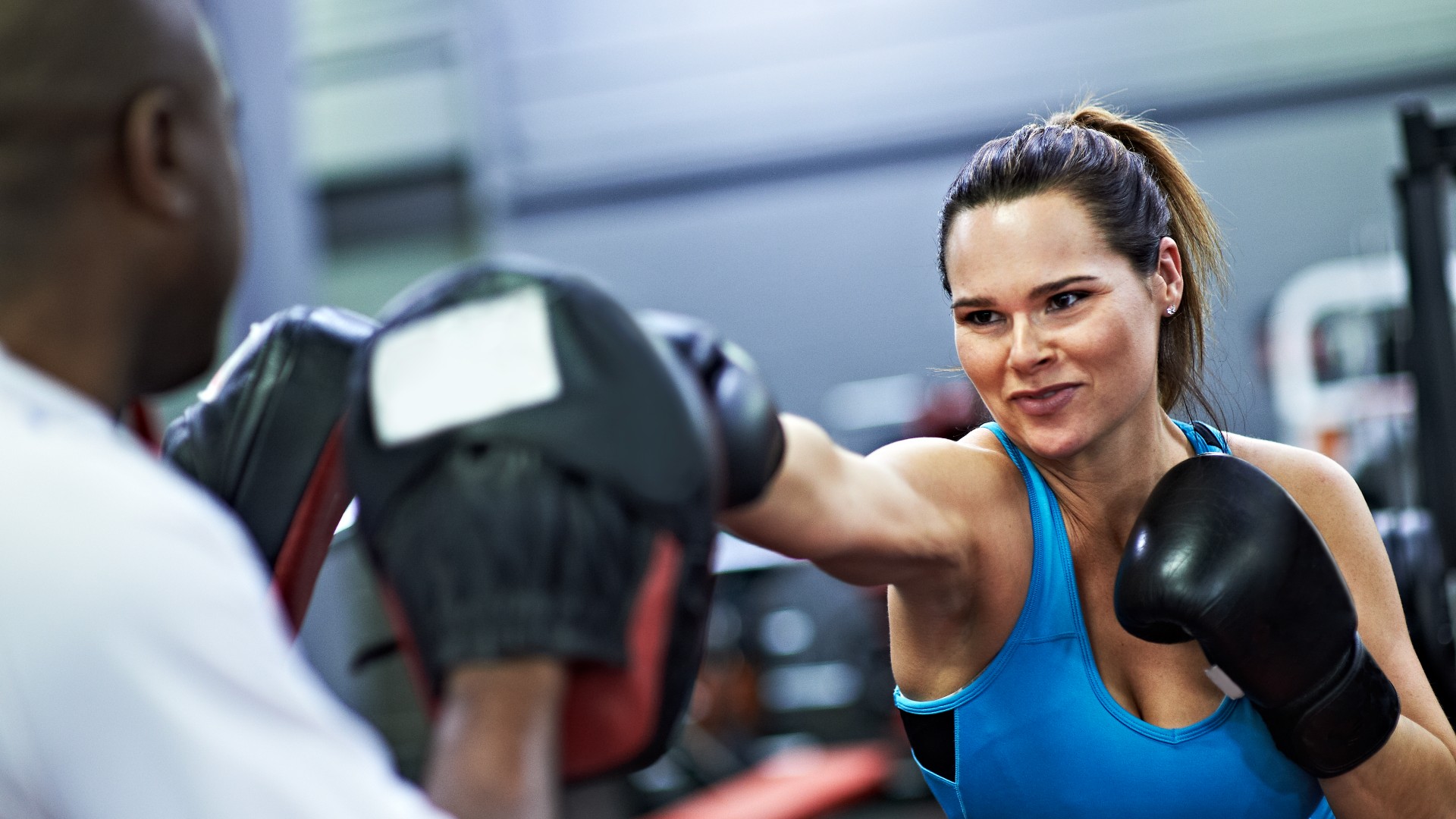
While boxing has long been seen as a professional combat sport, it’s only recently that the benefits of boxing as a form of exercise for amateurs have begun to gain traction.
According to a review published in the Strength and Conditioning Journal, boxing is regarded as one of the most mentally and physically demanding sports in the world, yet robust scientific literature is somehow still lacking.
But, while research into the benefits of boxing is still in its infancy, current findings are beginning to show that this popular stress-relieving activity can improve your strength, speed, coordination, and aerobic capacity, and pay dividends for your mental well-being and confidence, too.
And you don’t have to pull on boxing gloves and get physical in the ring to benefit from the sport, as there are plenty of non-contact ways to adapt boxing to your fitness routine for all fitness levels, abilities, and workout styles.
We spoke to boxers and coaches to find out why this sport is becoming increasingly popular for its lung-busting fitness gains. So, grab a pair of the best headphones or treat yourself to one of the best fitness trackers to get you channeling your inner Rocky and read on to learn more about the benefits of boxing.
Fitness boxing
Traditionally, boxing is associated with sparring, but many fitness classes now lift the training techniques and combinations associated with boxing and throw them into an accessible exercise routine instead.
If you’re not seeking to become the next Anthony Joshua, then sparring alternatives include one-to-one sessions using focus mitts, air boxing (punching into the air), and one-on-one punch bag work. This can ramp up a wickedly deceiving aerobic exercise workout, build full-body strength, and improve balance and coordination.
What’s more, you can practice your slip, duck, and roll (no, it’s not a type of sandwich) without the fear of being hit repeatedly in the head — unless you’re already a seasoned boxer or just prefer to spar.
Much of boxing training involves boxing-specific strength and conditioning exercises. These sessions include strength and cardio work that mimics boxing movements (like a wood chop movement using a weight) to improve efficiency in the ring. Boxers will work with strength and conditioning coaches alongside boxing coaches for this very reason.
Here are some of the main benefits up for grabs if you plan to hook, cross, and jab your way to improved health and fitness.
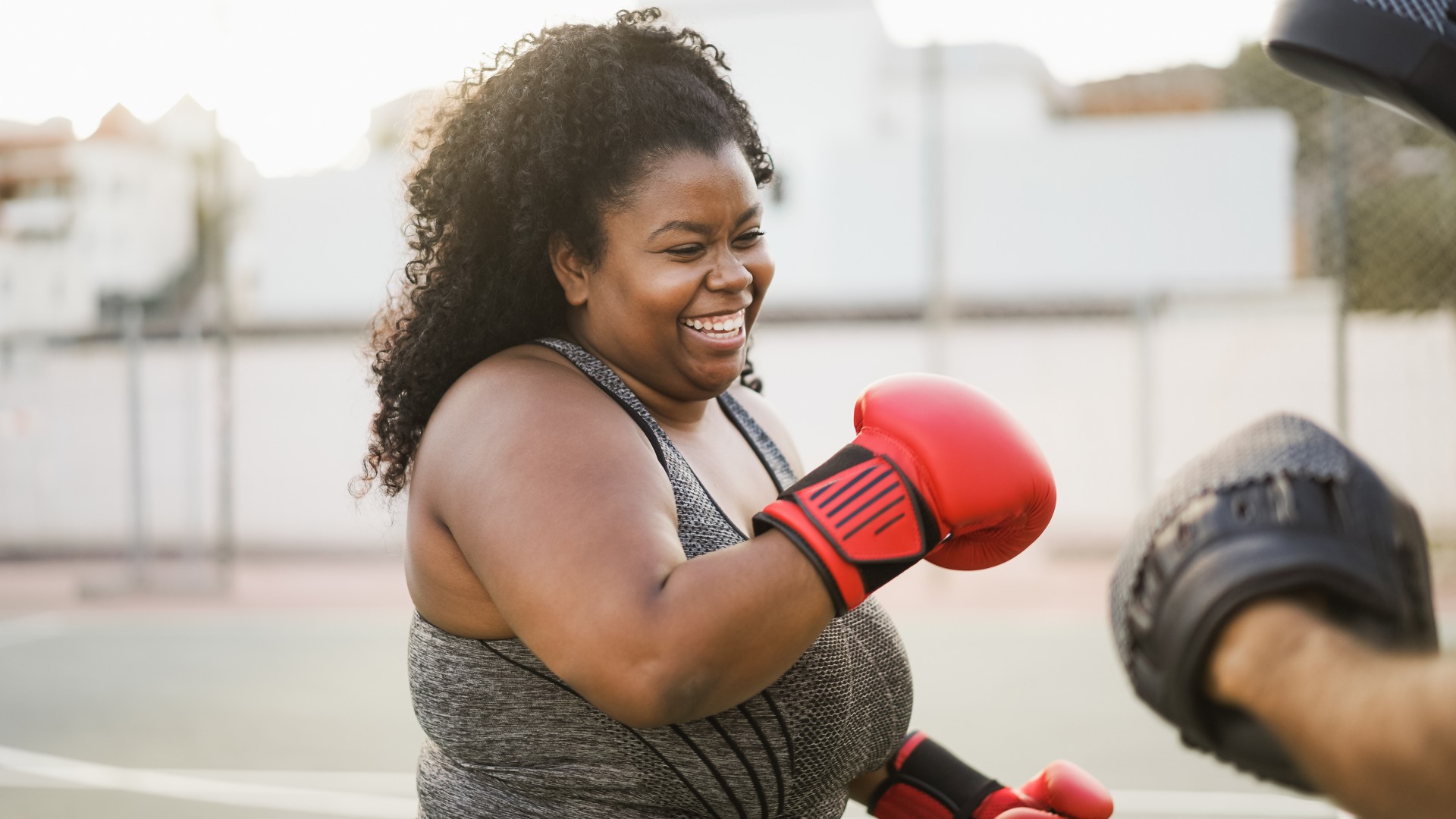
Boxing improves cardio fitness
Anthony Char, a trainer at John Reed Fitness, explains why boxing is a challenging and fun alternative to traditional cardio workouts.
“Boxing requires the full body to move. From staying on your toes to engaging the core muscles or throwing a jab or a cross, there’s a lot to think about, which makes it great for training both the mind and body,” Char says. “It’s also a great calorie burner and can often burn more calories than cardio workouts such as running. It’s a fun alternative to traditional cardio workouts like HIIT or swimming.”
One study published by the University of Texas at El Paso found that a polarized boxing training program reduced resting heart rate, lowered blood pressure, and improved cardio fitness in individuals with elevated blood pressure and stage 1 hypertension.
Harold Tackie, boxing coach at BXR, the world-renowned boxing gym also known as ‘the Anthony Joshua gym,’ says the obvious physical benefit of boxing is improved cardio fitness.
“We’re aware of benefits like improved cardiovascular fitness as it’s a sport where participants have to function at between 70-95% of their maximum heart rate,” says Tackie.
“Pushing one’s lactic threshold means they can operate for longer at a higher intensity. This also improves the metabolic function of the cells and how we convert glycogen into ATP to utilize as energy.” In short? A more efficient energy system, as backed up by this study in the Journal of Sports Medicine and Physical Fitness.

Anthony Char is a 34-year-old Coach from East London with over 10 years of experience in the Fitness industry. This journey would see him become the Head Coach and Founder of one of the top 3 UK Calisthenics Teams ‘Forever WHAM’. Anthony founded one of the biggest competitions in the UK for calisthenics called Rep Out Games 2017. He competed in a charity boxing match which would unleash a new phase of learning and training. Tony has been polishing his skills in the art of boxing and conditioning for sports over the last five years.
Boxing works multiple muscle groups
Aaron Guyett, Director of Education at Living.Fit, world-class coach, and Marine Corps Staff Sergeant, believes that every person who starts boxing will notice plenty of fatigue at the start with just a little focus mitt, heavy bag, and footwork training. Typically fatigued areas include your shoulders, arms, core, and upper back.
“Once you attend training a few times a week for a couple of weeks, you’ll be able to put together more combinations, and each punch becomes faster and stronger,” he says.
According to Guyett, one of the main contributors to this increase in performance is improvements in your physiology (ability to recruit more muscle and have the aerobic capacity to perform longer) and nervous system.
“The CNS (central nervous system) and PNS (peripheral nervous system) begin to improve how they recruit muscles and put together movement patterns for more effective and efficient movements,” explains Guyett. “This is why you feel stronger, faster, more coordinated, and have better timing.”
A study published in the Journal of Sports Medicine and Physical Fitness found boxing to be a great way to aid weight loss and build lean muscle mass in individuals, though the area needs more research.
However, it’s thought strength and conditioning supplementation in training could be the main reason, as strength training improves both force and power when applied in boxing training.
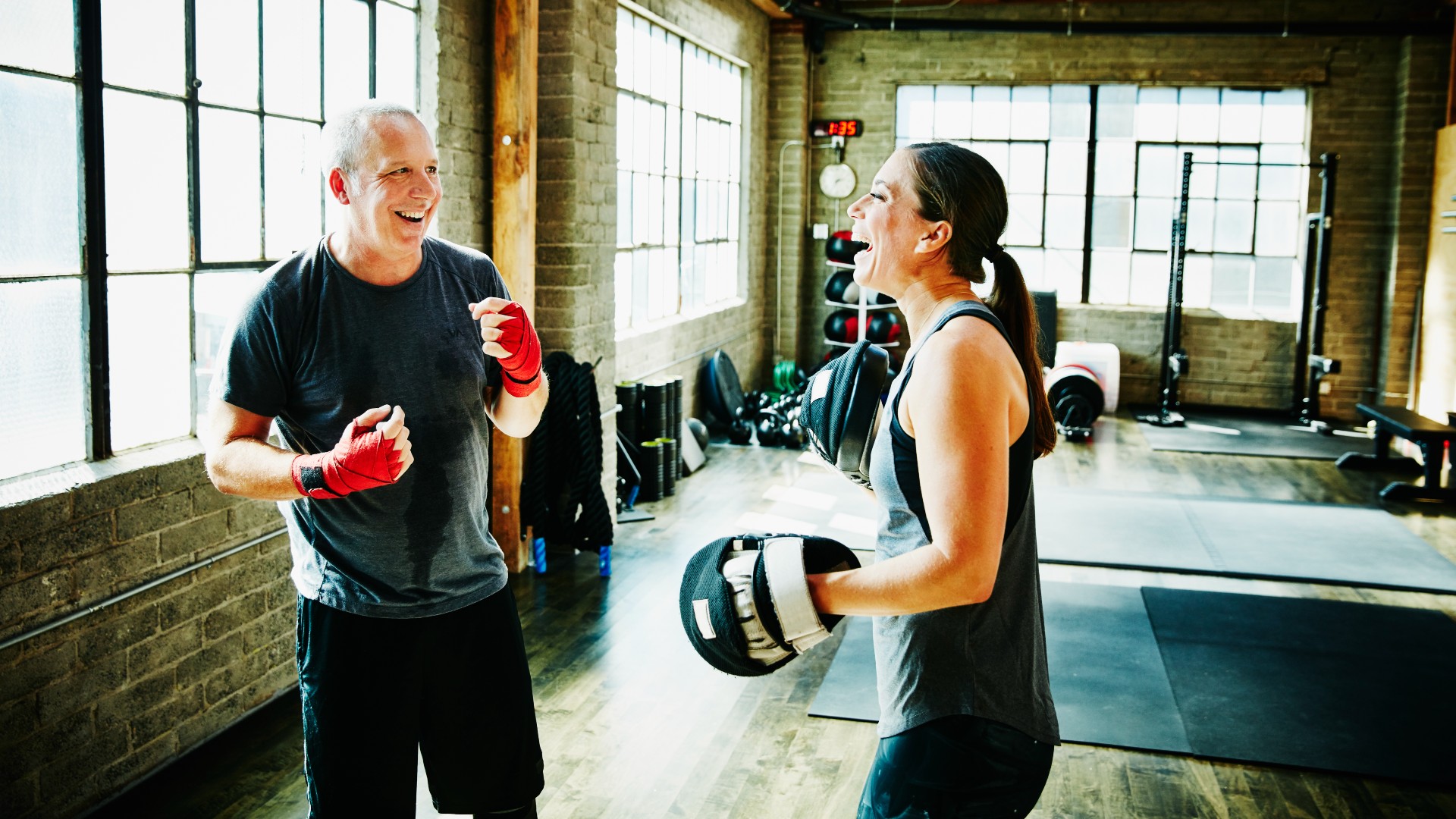
Boxing improves coordination and spatial awareness
Tackie tells us that other lesser-known physical benefits include improved hand and foot coordination and spatial awareness.
He explains that, unlike most sports that rely on cross-body coordination (for example, running uses the opposite arm and leg), boxing relies on coordination on the same side — like moving your left arm with your left foot.
“This improves spatial awareness as you continuously judge how far away your opponent is from you to land your shots and evade theirs,” says Char. “Another unknown benefit is that it can make slight improvements to your line of sight, as you have to rely a bit more on your peripheral vision to see punches coming at you.
Reaction times also improve as you become better at being able to read your opponent and evade their shots.”
Char adds that switching from an orthodox (right-handed power shot) to a southpaw method (left-handed, when you jab with your right and cross with your left) will improve your motor skills when working between the two. “Fighters will predominantly do one, but training both in balance creates better footwork and understanding between mind-muscle connection as you piece together the movement patterns.”

Harold likens boxing to a language and aims to combine his experience and skills to teach it as fluently as possible. Harold began Tae Kwon Do aged 17 and immediately flourished in a disciplined and challenging training environment.
His achievements include English and British titles across various disciplines; he also thrived as a coach, gaining his first four black belts in just over three years. He's coached at BXR since its inception and has been in the industry for 12 yrs, including 7yrs as a professionally licensed boxing coach. He has a 4th Dan black belt in Tae Kwon Do and a degree in psychology as well as personal training and level 2 weightlifting qualifications.
Boxing improves stamina and endurance
According to Char, rapid movements and fast-paced drills and circuits associated with boxing-style training get the heart rate pumping and encourage you to remain light on your feet, which, in turn, builds stamina and endurance. He adds that ‘ultimately, consistent exercise builds stamina, and boxing is a great way to do this.”
This is why a lot of boxing-style training will also include running and endurance-based activities to work on both aerobic and anaerobic exercise.
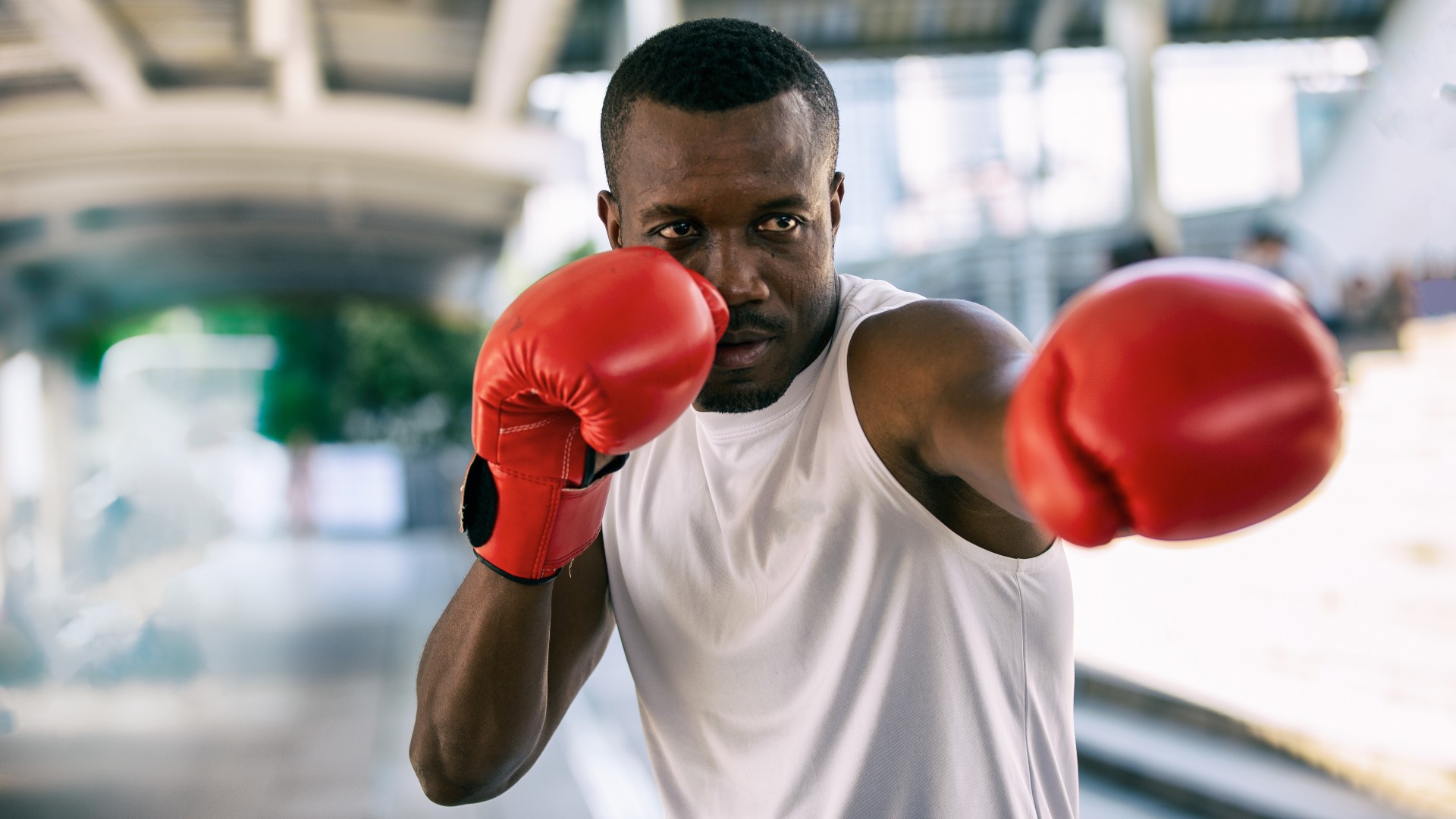
Boxing can improve mental wellbeing
Boxing coach Tackie says that the most important benefits are mental — in terms of what the sport teaches you about yourself, including self-control, discipline, and focus. “A prime example is the emotional control and discipline, particularly when sparring or fighting,” he explains.
“The situation can be overwhelming if you rely on your emotions to make split-second decisions. You have to rely on your training to make better decisions, which is where discipline comes in, as training for boxing can be repetitive. That same repetition of movement is what you must rely on to get the best outcome.”
According to Tackie, this ties into focus and concentration and is especially true at high-level amateur and professional level boxing, when you’re under a lot of pressure. The training is often grueling and pushes you to the limit; this ability to push through and overcome adversity is how those at a higher level become successful as they continue to fall back on their training.
Char adds that even though boxing is known for building physical and mental strength, it’s also a form of self-defence and can help build confidence, resilience, and self-awareness, and aid stress relief.
And taking to the bag could be helpful if you need a little stress relief from time to time. “Punching a boxing bag is a safe way to let off steam and release any frustrations,” he says. “Also, because boxing requires so much concentration, it takes over the mind and relieves stress via distraction.”
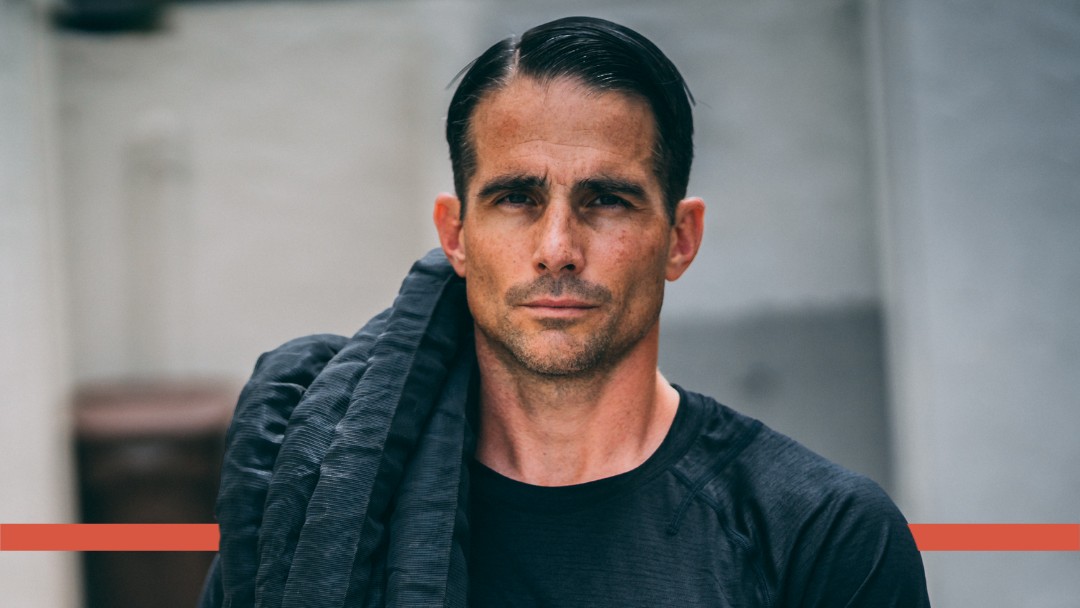
Aaron Guyett, CSCS, is Director of Education for Living.Fit. Aaron is a world-class trainer and coach with a wide array of skills that he brings to both mental and physical fitness. He is a Marine Corps Staff Sergeant and has over a decade of battle rope and metabolic pathway programming for power, strength, and endurance to athletes and coaches of all levels.
Beginners boxing workout to try
Warm-up
Skipping working 1 min (30-sec rest)
10 rounds
Workout
Shadow boxing 4 rounds 2 mins (60-sec rest): 1 round orthodox, 1 round southpaw then repeat. The focus here is relaxed and with speed.
Boxing bag 6 rounds 3mins (60-sec rest): 1 round orthodox, 1 round southpaw then repeat till completion.
Focus on keeping the shots long until you come in close. Change levels and vary the speed, power and freestyle. Challenge yourself by increasing the punch volume.
Warm down
Pike sit-ups 20
Leg raises 20
Russian twist 20
X 3 rounds
Sign up for the Live Science daily newsletter now
Get the world’s most fascinating discoveries delivered straight to your inbox.

Sam Hopes is a level III fitness trainer, level II reiki practitioner, and resident fitness writer at Future PLC. Having trained to work with both the mind and body, Sam is a big advocate of using mindfulness techniques in sport and aims to bring mental wellbeing to the forefront of fitness. She’s also passionate about the fundamentals of training and how we can build more sustainable training methods. You’ll find her writing about the importance of habit-building, nutrition, sleep, recovery, and workouts.










